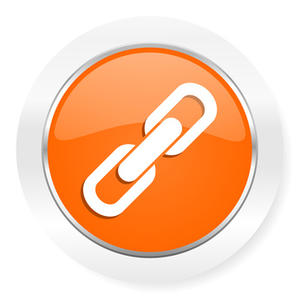
When blogging for business, you’ve likely been focusing on the main column of your blog where your articles (posts) are displayed, not giving much thought to your blog sidebar.
The blog sidebar is the narrower column that’s usually on the right, and this is where readers find links to older posts you’ve published. These links help you reach two important goals:
- Give readers the specific help they need, solidifying their perception of you as a knowledgeable – and generous – expert
- Encourage readers to spend longer on your site, deepening their trust and sense of relationship with you, and increasing the likelihood they will click to learn more about your products and services
Most blog design templates display your recent posts by default in the sidebar, but not always in the most effective way.
Let’s look at the two most common ways to link to your older posts, and why I prefer one over the other. I’ll also give you my seven best practices for listing blog categories in your sidebar.
Option #1: List your blog categories by name (the method I recommend)
Blog categories help you organize your blogging into the specific issues your ideal clients want to know more about, and the topics you want people to associate with you and your business.
When you display a list of your blog’s categories in the sidebar, you show that you have knowledge, experience and skill with these topics.
7 best practices for blog category lists
- Reveal each category name – Don’t hide your categories in a drop-down menu or people will only see the breadth of your expertise if they click on the non-descript “Select Category” box (and who would want to click on that?).
- Name your categories consistently – This includes length, word tense, and capitalization. So if you have one category about cleaning and one category about cooking, call them “Cleaning Tips” and “Cooking Tips,” rather than naming one of them “How to Cook [or Clean].” I use title case in category titles (capitalize each word).
- Incorporate relevant keywords in your category names – Always think of your readers first, and use everyday language they would recognize and use themselves. Then, you can apply your keyword research to tweak these terms for search engine optimization.
- Order your categories – By default some content management systems (CMS) like WordPress will display categories in the order you add new content to them. This is not usually the most meaningful order, nor is it particularly helpful for someone looking for information on your site. Your web developer can easily customize this with plugins or by creating a custom menu or category widget with links to each of your category archive pages. I recommend either:
- Alphabetical order – People will instantly realize how to scan the list to find what they need.
- Importance – Show people what they can expect from your blog by listing your top categories first.
- Hide post numbers at first – You have the option to display how many posts you’ve published in each category, usually in parentheses after the category name. I recommend hiding this until you’ve built up several posts in every category. At that point you can add them, if you wish, which will demonstrate your consistency.
- Clean up your categories – If you’ve been blogging for awhile and haven’t been paying close attention, you may have some of these issues:
- Duplicate categories – In a hurry to publish a post, you may have created a new category instead of assigned one of your existing ones. The two may be similar enough to create confusion for you and your readers, e.g., Leadership and Leadership Tips.
- Outdated categories – Perhaps you had a great idea for a new topic but hadn’t thought through to how you would keep contributing to this category. Or maybe your focus has simply shifted over time.
- Uncategorized posts – This signals to readers that you’re disorganized or even lazy. If you’re neither, re-assign any uncategorized posts and make sure this word never shows up in your sidebar again.
- Label your category section – While most people will understand what you mean by categories, you could enhance your reader’s experience and perception by choosing a more descriptive label such as “Topics,” “Advice” or “Articles.”
Option #2: List blog archives by date (optional, as an addition to your category list)
I see this as the default option on most business blog sidebars, and that’s a shame because it’s the least useful way to display your collection of blog posts.
Put yourself in the shoes of a visitor to your website. If you’re looking for information about a particular topic, or you’re trying to find out more about a business, how will it help to see a list of dates, or the number of posts published in a particular month?
Dated blog archives give people an instant snapshot of your blogging history. Month names are only displayed when you’ve actually published. This definitely works against you if you haven’t been consistent, and is a good reason to hide this feature until you’re blogging more regularly.
On the other hand, if you’ve been blogging consistently for many months or years, it can be interesting for you and your readers to view past posts in the context of the other posts that were published around the same time.
If you do choose to display your blog archives by date, I recommend the drop-down list format to save space and avoid clutter.
People visit your website for information that will improve their lives or businesses. By helping them find what they’re looking for, you create a connection they’ll remember when it’s time to make a purchasing decision.



